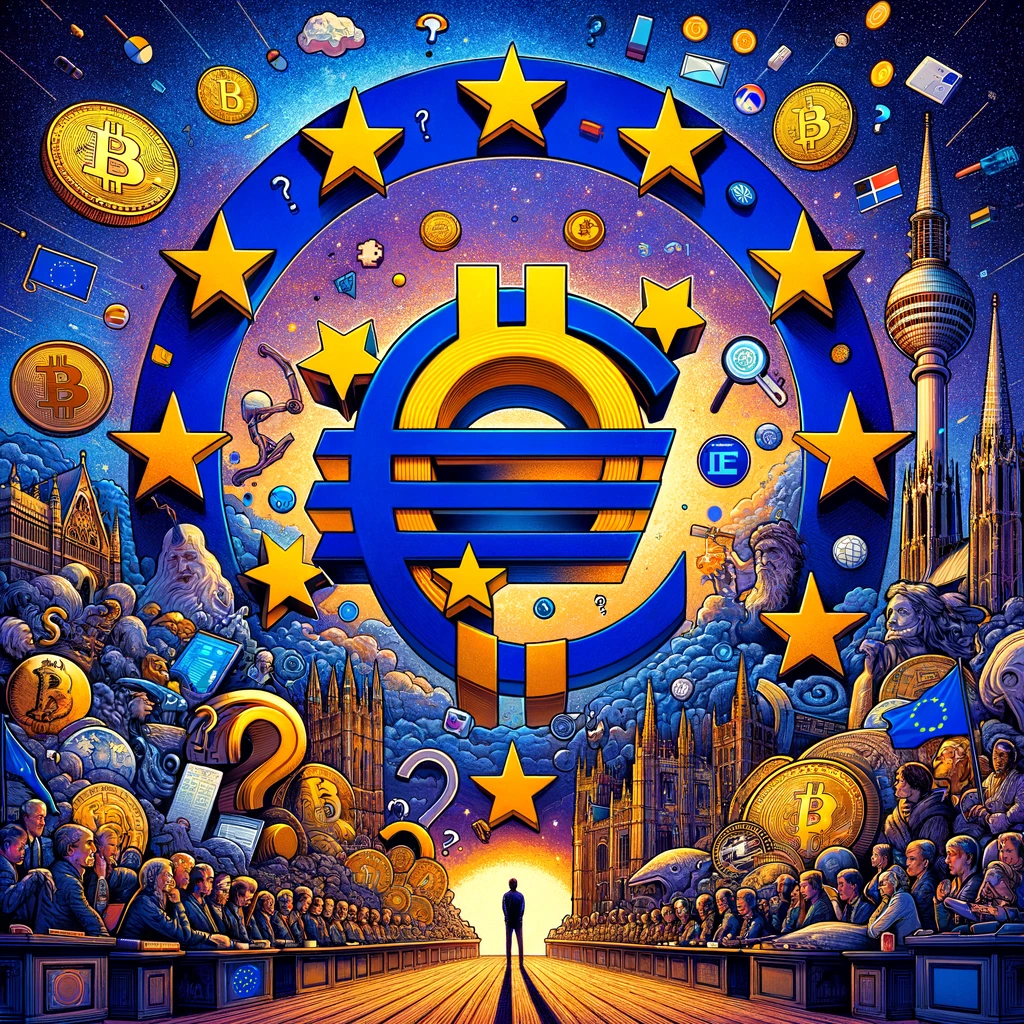Europe is doubling down on its standoffish vibe with Bitcoin. The continent, known for its rich history and diverse cultures, seems to just really hate Bitcoin. But why? Let’s dive deep into the heart of Europe’s Bitcoin blues, dissecting every nook and cranny of the continent’s love-hate relationship with cryptocurrency.
The Grand Skepticism
It all kicked off when the US Securities and Exchange Commission (SEC) green-lit Bitcoin ETFs, igniting a spark of hope among Bitcoin enthusiasts. This move was seen as a nod towards the safety and legitimacy of Bitcoin investments. However, Europe looked at this development through a lens of skepticism.
The European Central Bank (ECB) was quick to call out the fallacies in the Bitcoin fairytale, emphasizing the currency’s failure to establish itself as a reliable financial asset or a global cryptocurrency. The ECB’s concerns weren’t just hot air; they highlighted the tangible risks of a boom-bust cycle, environmental damage, and the redistribution of wealth from the naive to the savvy.
Bitcoin’s journey has been anything but smooth. Its aspirations to become a universally accepted currency have crashed against the harsh reality of slow, costly transactions. Even El Salvador’s bold experiment to kickstart Bitcoin adoption didn’t do the trick. As for investment? Bitcoin is as barren as it gets, offering no dividends, cash flow, or tangible value. And yet, despite its glaring flaws and a track record of environmental havoc, Bitcoin’s value surged, leaving many scratching their heads.
Regulatory Roadblocks and Environmental Alarm Bells
Europe’s apprehension isn’t baseless. Beyond the speculative frenzy, Bitcoin’s environmental toll is staggering, mirroring the carbon footprint of entire nations. The continent’s regulatory bodies have been playing catch-up, trying to rein in the wild west of crypto with mixed success. The Markets in Crypto Assets Regulation (MiCA) and other initiatives signal a move towards oversight, yet Bitcoin remains largely untamed, its energy consumption unchecked.
The Bitcoin ETF saga in the US has spilled over into European markets, stirring interest yet meeting a wall of regulatory caution. European investment structures, bound by the UCITS framework, don’t entertain the idea of single-asset ETFs, a stark contrast to the US’s more laissez-faire approach. This divergence underscores a deeper, more fundamental rift between European caution and American optimism towards crypto investments.
The Cultural Divide: Europe vs. America
The launch of Bitcoin ETFs stateside has cast a long shadow over Europe, revealing a stark contrast in investment philosophies. Martijn Rozemuller of VanEck Europe shed light on the European investor’s psyche, marked by a cautious approach to risk and a preference for traditional investment avenues. While American investors dive headfirst into the crypto pool, their European counterparts linger at the edge, wary of the waters. Europe’s financial institutions, bound by regulatory conservatism and a historical reliance on mutual funds, remain hesitant to embrace Bitcoin and its siblings.
This transatlantic divide is more than just regulatory; it’s cultural. Europe’s guarded stance on Bitcoin ETFs, driven by UCITS regulations, reflects a deeper skepticism towards speculative investments and a prioritization of investor protection. The lack of a single-asset ETF framework in Europe is a manifestation of the continent’s collective disdain towards the cryptocurrency industry.
From Zero to Web3 Pro: Your 90-Day Career Launch Plan
